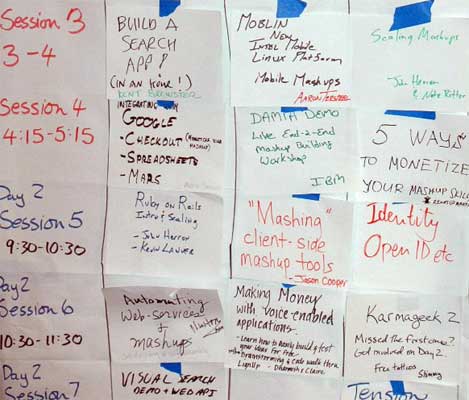Fourth Mashup Camp proves how the unconference format still has legs

For those who still question whether the unconference format for events has any staying power, Mashup Camp, now in its fourth edition, is proving that it definitely has legs. There are a lot of different approaches to unconferences. But virtually all of them involve content that's for the attendees, by the attendees. Not only do the attendees provide the main content of the event, the sessions are a series of conversations rather than hard and fast death-by-PowerPoint like presentations.
For disbelievers and people who still think the traditional conference is the way to go, consider how some of the most relevant information, useful introductions, and productive discussions found at a typical conference are found during the coffee breaks. An unconference takes the coffee breaks and turns them into the main event. Unlike with conferences where the session content is determined 6-12 months ahead of time, the content at an unconference is guaranteed to be timely and relevant to the attendees.
At Mashup Camp, the event started with a general assembly where attendees got up in front of the group to announce the discussions they wanted to lead (or they can ask someone else to lead them). As they announced these discussions, they literally taped the details (written down on 8.5x11 sheets of paper) into a giant grid that represents the unconference's two day agenda (a segment of this grid is shown below):
Shortly after the grid is "programmed" (and even as more content is added to it throughout out the event), a replica of the grid is programmed into a Web page on Mashup Camp's wiki where the individual discussion listings (eg: the one on Art and Social Networks) can be linked directly to a copy of the session minutes that were recorded into the wiki by one of the session attendees. In the case of that particular session, the attendees went to the trouble of recording the audio and have provided a link to that audio from the session minutes.
From the agenda to the session notes, and audio and video recorded at the event, using this Open Space methodology (which is what we use to run Mashup Camp), it's pretty much impossible for the agenda to include outdated or irrelevant (to the attendees) content. Below are some images from the sessions as they were taking place at Mashup Camp in Silicon Valley.
